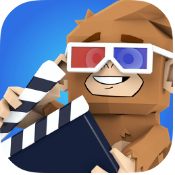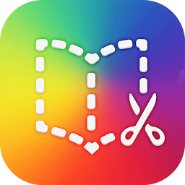Digital Storytelling: An Exciting Teaching Tool!
By Samantha Weigle and Katie Caprino

Sam
As a sixth-grade ELA teacher, Sam is constantly trying to find ways to engage her students with meaningful activities that allow for student choice and the showcasing of their interests.
Recently she’s been taking advantage of students’ access to web-based tools and handheld devices and encouraging them to bring their stories to life in digital spaces.

Katie
In this post Sam, a language arts teacher, and Katie, a literacy teacher educator, share:
- our definition of digital storytelling,
- the advantages of digital storytelling, and
- how to get started with digital storytelling in your classroom, highlighting a few tech tools that may help.
What is Digital Storytelling?
Digital storytelling, as defined by ELA and drama teacher Kara Wyman, is “a multimedia approach to sharing a narrative” (Wyman, 2018).
Characters can come to life, engage in dialogue, and move around the setting. Adding audio clips can complement the written text, and music can set the mood. Students can begin to understand how to reach and engage audiences.
Here are few examples of digital stories created using the technology tools described in this post!
►Girls Don’t Play Basketball by Leah Ray
►“Sea” You Later by Arisyn T. Kouch
►Ocean Adventure by Yanal, Ana, Zai & Ian (posted by Sophia Vincent)
Digital Stories Reach All Learners
Digital storytelling helps middle grades teachers reach all types of learners. Incorporating digital storytelling into the classroom can:
- Provide English learners opportunities to practice their language acquisition skills;
- Allow for differentiation and adaptations to be made;
- Create a positive classroom culture and cultivate respect among peers;
- Develop 21st Century skills;
- Allow students to showcase their creativity.
Digital storytelling breaks down barriers and cuts out the “one-size-fits all” model. Teachers can meet students at their level and provide them with a safe place to learn in a way that fits them best. These projects allow students to engage in a meaningful assessment that motivates them.
Where Do I Begin?
There are numerous benefits of digital storytelling, but where do you begin? As you think about how to implement this concept into your own classroom, here are a few steps to get you started.
1. Determine the learning goals, objectives, and outcomes of the assignment.
2. Show students some examples of digital stories, especially if they are unfamiliar with the genre.
3. Decide if a specific writing purpose (e.g. to entertain, to inform, to persuade, etc.) or specific writing skills (e.g., dialogue, character development, plot, etc.) will be the focus – or if students will have creative freedom.
4. Create and provide students with a rubric or checklist.
This initial planning helps teachers design a roadmap on where to go and how to create a polished finished product. The way in which students reach that finish line is up to you and may look different each year – or in each class – depending on your learners.
Some Suggestions about Technology
With so many technology resources to choose from, it can be hard to know where to start. Below is a short list of three technology tools we’ve found useful, with their notable features.

- Personalize characters
- Add narration
- Follow story plot maps
- Insert music
- Export and share stories

- Design characters (outfits, expressions, and colors)
- Add voice recordings (QR codes are included within published books)
- Collaborate with peers on books
- Use included templates for page layouts
- Choose Storyjumper images or upload their own
- Share a finished project to Google Classroom

- Illustrate their own images
- Add music and videos
- Record their own voice
- Create stories using provided themes and templates
- Embed content from other apps and websites
- Publish, print, or share their eBook
Want to look at more available technology options? Check out these articles:
►Common Sense Top Picks for Storytelling
►Tech&Learning: 30 Sites and Apps for Digital Storytelling
►Black Sheep: 17 Best Digital Storytelling Tools
We would love to hear how you engage in digital storytelling or plan to in the future!
Reference
Wyman, K. (2018, September 4). Why teachers need to embrace digital storytelling: Resilient Educator.
Samantha Weigle (@weigle_samantha) is a sixth-grade teacher in Lancaster, PA. She graduated with her BS in Early Childhood Education from Elizabethtown College in 2019. She graduated with her MS in Instructional Technology from Wilkes University in 2020. She is beginning her next master’s degree program in Curriculum and Instruction with a focus in trauma at Elizabethtown College this fall.
Katie Caprino is an Assistant Professor of PK-12 New Literacies at Elizabethtown College. She taught middle and high school English in Virginia and North Carolina. She holds a BA from the University of Virginia, graduate degrees from the College of William and Mary and Old Dominion University, and a Ph.D. from UNC-Chapel Hill.
Katie researches and presents on children’s, middle grades, and young adult literature; the teaching of reading and writing; and incorporating technology into the literacy classroom. Follow her on Twitter at @KCapLiteracy and visit her book review blog.



































this was very helpful. I would try to apply it in our school this reading month